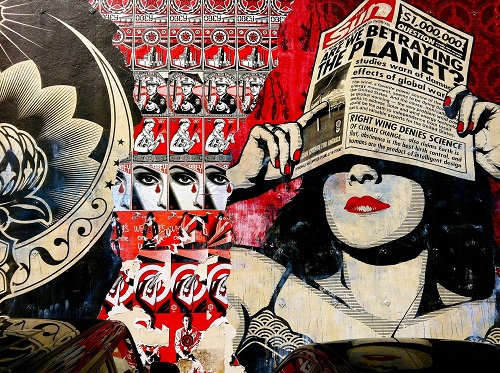pixabay image
By
Ricardo Swire
After World War II conventional warfare’s propaganda tactics were replaced by subversive internet activity or digital misinformation. Today propaganda focuses on subliminal messaging that convinces listeners/viewers to adopt abnormal conditions, in addition to adjusting personal priorities and moral standards. Propagandists utilize traditional visual codes already established in mainstream cultures. Insurgent organizations in Iraq and Syria have capitalised on internet connectivity to broadcast misinformation, radical extremist views and goals to global audiences. In the art of war enemies of a state often contract propaganda specialists who fuel social, religious and political rivalries.
Twenty-first century propaganda campaigns have contributed to an enlightenment that “the people” are not synonymous to “the nation” and history can be contested territory. In 2017 America’s leading social media platform Facebook admitted the “Secured Borders” webpage was actually a Russian operated account, established to promote divisive US social issues such as immigration reform. Collected evidence showed Russian operatives used bogus personalities registered on the Secured Borders webpage, in concert with two hundred and ninety other Facebook and Instagram pages, to start a propaganda war and sow discord in American politics.
In September 2017 Facebook executives formally pulled the plug on the Russian sponsored web pages. Instagram, the photo sharing platform, discontinued similar accounts citing “misrepresented identity.” Automated social media site security protocols are normally configured to suppress links that direct users to “fake news.” Trends show “Algorithms” applied by leading tech companies do not detect falsehoods posted within status updates, or recognize mischievous adjustment to pictures and videos. Social media websites identify original pictures, videos and audio for copyright enforcement. Distinguishing doctored pictures or videos provides challenges because tracking changes requires the original image which is not always available.
Russian Facebook accounts maximized manipulated pictures and images projected out of context. Google and Facebook greatly depend on users to “flag” or indicate suspicious posts containing false data. Such public dependency was recently demonstrated when Google’s subsidiary YouTube admitted it wrongly promoted an impactful conspiratorial video. The broadcast falsely accused a female teenage witness of conspiracy to the tragic February 14, 2018 six minute long Marjory Stoneman Douglas High School fatal shootings in Parkland, Florida. Facebook technocrats concluded Russia’s propaganda warfare in America also broadcasted under a masquerade called the “Internet Research Agency.”
The Russian web portal gave guidance to its associates on the “ratios of texts in social media posts” and “how to effectively use graphic and videos.” Internal security data registered the September 2017 email from one Internet Research Agency operative to his family that read; “I created all these pictures and posts and the Americans believed that it was written by their people.” A US court indictment confirmed the Russian entity trademarked doctored pictures with branded watermark icons in each corner. The international cloak and dagger internet activity dramatized superpower Russia’s use of the US internet platform to wage a propaganda war intended to further polarize American society.
Ricardo Swire
Ricardo Swire is the Principal Consultant at R-L-H Security Consultants & Business Support Services and writes on a number of important issues.



No Comments Yet!
You can be first to comment this post!